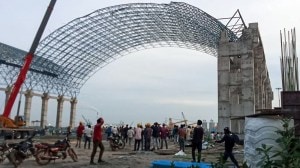Sepang will turn the heat on drivers
After Australia, it’s Malaysia’s turn to play host to the Formula One circus — and to throw in a challenge of a different kin...

After Australia, it’s Malaysia’s turn to play host to the Formula One circus — and to throw in a challenge of a different kind.
If Melbourne tested drivers and teams on their ability to adapt to new rules, Sepang this weekend will see how the car engines endure two consecutive races. F1 engines this season are required to last for two whole race weekends.
It’s a known fact that Malaysia will provide the stiffest test among all venues, simply because of the heat. With track temperatures expected to average 30 degrees and touch 41 degrees (as it did last year) the drivers — with engines 300 km old — will be pushed to run a balanced, tactical race.
Manufacturers will be looking to cope with overheating or extra thermal loads by incorporating larger cooling air intakes into the car’s design.
Last weekend, despite the heat of Melbourne, the entire field came through without engine failure. However, that statistic is best explained by the race winner, Renault’s Giancarlo Fisichella: ‘‘Reliability was superb but we only ran the engines to half their life — and failures are much more likely in the second half than the first.’’
It’s not just engines, of course, that will be wrapped in metaphoric cotton wool. The other major rule change is that one set of tyres must last through qualifying and race.
The Sepang International Circuit has slow and medium speed corners and two long straights, so in these conditions a flat-out, speed-oriented driver would wear his tyres out in no time.
That leads tyre manufacturers to finding the best mix for their tyres. Soft tyre compounds are best for grip, but wear out quickly and so won’t do at Sepang. Bridgestone, who manufacture for Ferrari with phenomenal results last year, have opted for slightly harder compounds this year.
Which brings us back to what Fisichella said: More mistakes happen towards the end because that’s when tyres are old.
The rules also make pit-stops less frequent; you can now stop only for refuelling, no longer for tyre changes.
For the record, Michael Schumacher (Ferrari), Nick Heidfeld (BMW Williams), Takuma Sato and Jenson Button (BAR-Honda) go into Malaysia with new engines. Schumacher and Heidfeld because of a DNF at Melbourne, while Sato pitted himself citing ‘‘engine problem.’’
In fact Sato’s ploy has been criticised for the manner in which he has circumvented the rules. That’s something F1 will have to deal with in the races to come.



- 01
- 02
- 03
- 04
- 05




























